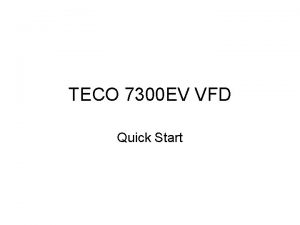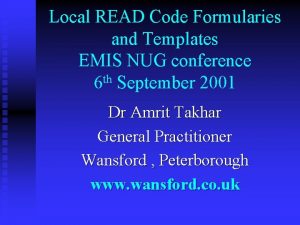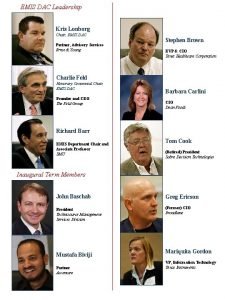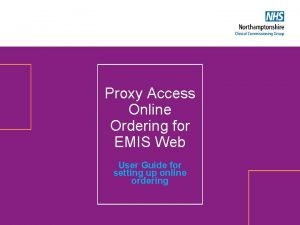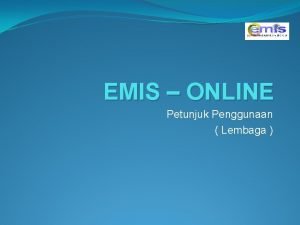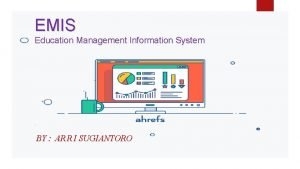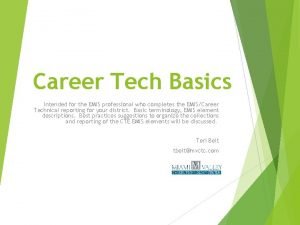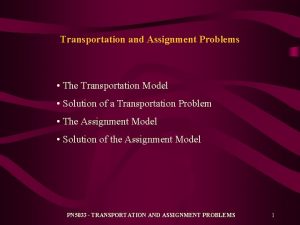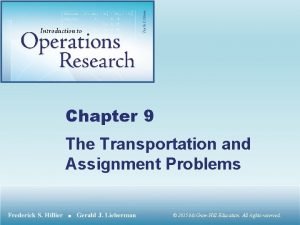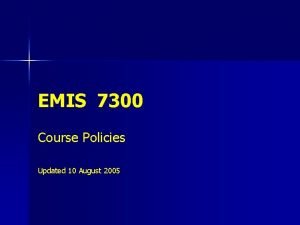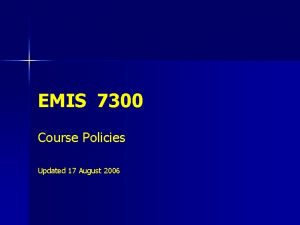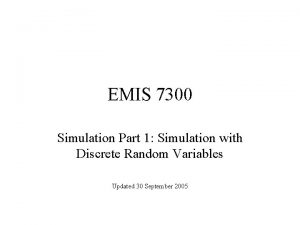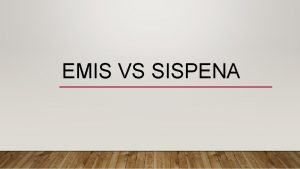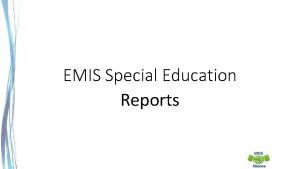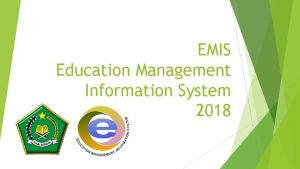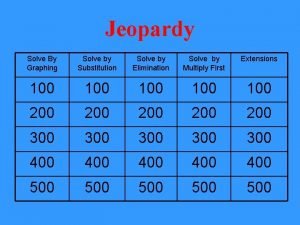EMIS 7300 Team Assignment 4 Solutions Solve the












- Slides: 12

EMIS 7300 Team Assignment 4 Solutions • Solve the following problems from the textbook: 1. 2. 3. 4. • Problem 2 -16 Problem 2 -17 Problem 2 -32 Problem 2 -34 To receive full credit for any problem you must clearly define any random variables or events that you use in your solution.

2 -16 • Let P(Ri), P(Gi), P(Wi) be the probabilities of drawing a red, green, or white chip, respectively, on draw i. • Since this is sampling with replacement, P(R 1) = P(R 2), P(G 1) = P(G 2), and P(W 1) = P(W 2). a) P(W 1) = 2/(2+8+10) = 0. 10 b) P(W 1 and R 2) = P(W 1) P(R 2) =0. 10 P(R 2) • • P(R 2) = 8/(2 + 8 + 10) = 0. 40 P(W 1) P(R 2) = (0. 10)(0. 40) = 0. 04. c) P(G 1 and G 2) = P(G 1) P(G 2) = 0. 25 d) The fact that white chip was draw first has no effect on the probability of drawing a red chip on the second draw. So, P(R 2|W 1) = P(R 2) = 0. 40

2 -17 • 451 out of the 1, 719 nails are 4 -inch nails. Thus, the probability is 451/1, 719 = 0. 26 • 333 out of the 1, 719 nails are 5 -inch nails. Thus, the probability is 333/1, 719 = 0. 19 • The number of nails that satisfy the requirement is the total minus the number of 4 - and 5 -inch nails. Thus, the probability is (1, 719 – 451 – 333)/1, 719 = 0. 54

2 -34 a • • • Let Di denote the event that drive i has a defect. P(Di) = 0. 1 There are five ways to have exactly one out of five defective: 1. 2. 3. 4. 5. • • D 1 and (not D 2) and (not D 3) and (not D 4) and (not D 5) (not D 1) and (not D 2) and (D 3) and (not D 4) and (not D 5) (not D 1) and (not D 2) and (not D 3) and (not D 4) and (D 5) P(event 1 above) = (. 1)(. 9)(. 9) = 0. 06561 P(event 2 above) = (. 9)(. 1)(. 9)(. 9) = 0. 06561 Events 1 and 2 above are mutually exclusive P(event 1 or event 2 or event 3 or event 4 or event 5) = (5)(0. 06561) = 0. 32805

2 -34 b • • • Let Di denote the event that drive i has a defect. P(Di) = 0. 1 P(zero out of five defective) = P(D 1)) (1 -P(D 2)) (1 -P(D 3)) (1 -P(D 4)) (1 -P(D 5))= (. 9)(. 9) = 0. 59049 (1 -

2 -32 • Let Ri denote the event that he answers question i correctly. • Let Wi denote the event that he answers question i incorrectly. • Since there are two possible outcomes for each guess, this “experiment” as 210 possible outcomes. – – R 1 & R 2 & R 3 & R 4 & R 5 & R 6 & R 7 & R 8 & R 9 & R 10 W 1 & R 2 & R 3 & R 4 & R 5 & R 6 & R 7 & R 8 & R 9 & R 10 R 1 & W 2 & R 3 & R 4 & R 5 & R 6 & R 7 & R 8 & R 9 & R 10 etc

2 -32 a • One way to calculate the probability of getting exactly 7 questions right is to find the probability of getting exactly 3 questions wrong. • To calculate the probability of getting exactly 3 questions wrong, we can count the number of distinct ways of choosing 3 questions out of 10 and divide that number by 210. – – – Questions with wrong answers: 1, 2, 3 Questions with wrong answers: 1, 2, 4 Questions with wrong answers: 1, 2, 5 … Questions with answers: 8, 9, 10

2 -32 a Continued

2 -32 b

2 -32 c

2 -32 d

2 -32 e • Let P(n) be the probability of getting exactly n of the 10 questions correct. • P(more than 6 correct) = P(7)+P(8)+P(9)+P(10) = 0. 17.
